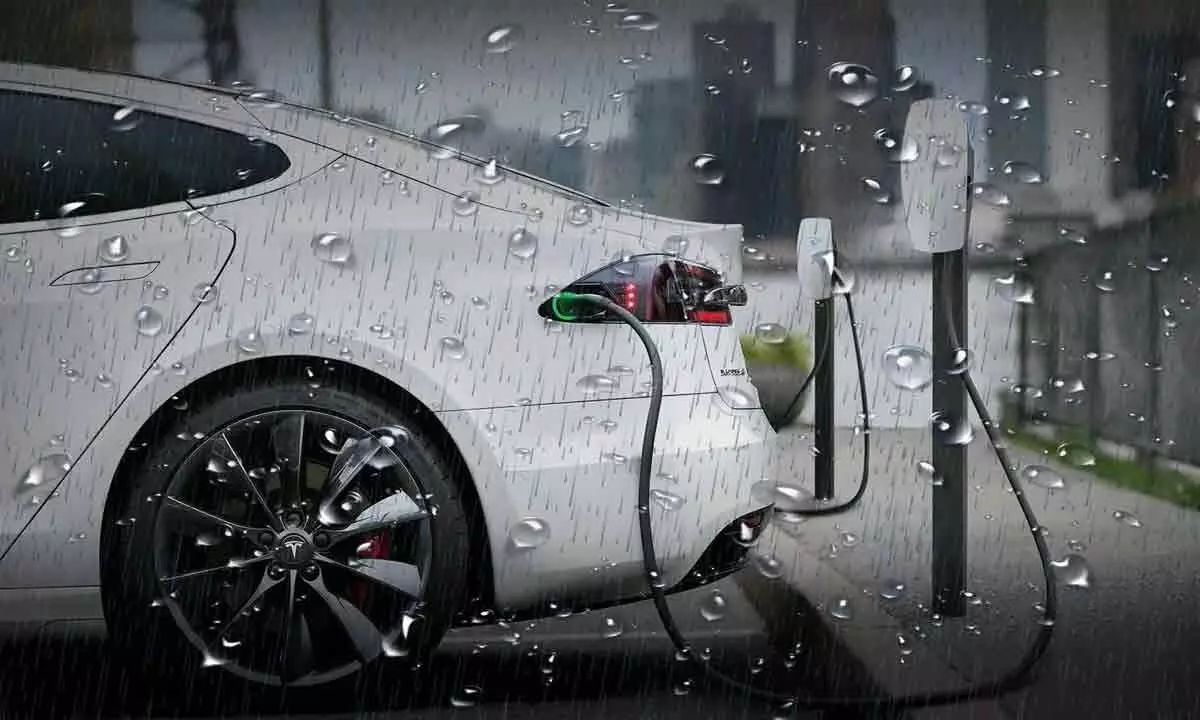Live
- Victory Venkatesh and Nandamuri Balakrishna to Set Screens on Fire with Unstoppable Season 4
- Over 71.81 crore Ayushman Bharat Health Account numbers generated: Centre
- In special gesture, Kuwait's Prime Minister sees-off PM Modi at airport after conclusion of historic visit
- Veer crowned PGTI Ranking champion, Shaurya wins emerging player honour
- Sr National Badminton: Unseeded Rounak Chauhan, Adarshini Shri reach singles semis
- Punjab seeks central assistance to strengthen security in areas adjoining Pakistan
- Malaysian national held from Tamil Nadu for cyber fraud of Rs 2.81 crore
- Child marriage will be eradicated by 2026: Assam CM
- PMK President Anbumani Ramadoss urges TN government to act against online gambling
- From defence to culture and sports, India and Kuwait sign key agreements during PM Modi's visit
Just In

India is the 5th largest car market in the world. In the coming years, it will become 3rd largest with more than 400 million people in need of mobility solutions by the end of this decade.
India is the 5th largest car market in the world. In the coming years, it will become 3rd largest with more than 400 million people in need of mobility solutions by the end of this decade. The steady increase in demand is leading to increased carbon emissions through diesel-run vehicles. Where the cost of crude oil is increasing day by day, there is an immediate need for mass adoption of the alternate solution - Electric Vehicles (EV).
In recent times, the only alternative to these traditional vehicles is EVs which are being pushed even by the government. As referred to the target, by 2030 the Electric Vehicle penetration must be raised by 40% in buses, 70% in commercial vehicles, 30% in private cars, and 80% in 2-3 wheelers. To accomplish this target, the GST on EVs is reduced by 12% to 5% and subsidiaries are provided to the manufacturers. EVs are the clear future of transportation not only in India but across the world.
In the past few years, EVs have gained prominence in the automotive sector and it will not be long before they become more established. While the EV segment is still at a nascent stage, India's EV market is evolving rapidly. Adoption has seen a significant uptick. Nonetheless, there still seem to be some myths about their capabilities, especially when it comes to their immunity against rainy weather. As the monsoon approaches, the actual question is - Is Monsoon a bummer for the EV revolution?
We have seen there are quite a few myths about EV and their performance during monsoon. The pointers below will help in bursting these common myths.
Myth 1: Waterlogged areas are not safe for EV
EV has an Ingress Protection (IP) system. Modern-day Electric vehicle batteries have an IP67 rating which allows you to submerge the vehicle in water up to one metre for up to 30 mins without any leakage. Thus, in a situation where the car needs to encounter a water logging situation which is usually about 300 mm in depth one does not have to worry about damage to the terminals, connectors and high voltage architecture of the vehicle. All systems, inside the battery pack, have multiple layers of protective cutoffs that activate at the first sign of water ingress. The main battery pack also can isolate itself electrically from the rest of the car.
Myth 2: Lightning will damage your EV and is dangerous for the EV
People worry about the effect that lightning would have on EVs. However, one is actually safer when they are inside a car during lighting. The rationale behind this is, that when a bolt of lightning hits a car, it hits the exterior which is a metallic surface. Electric car charging systems are designed to be weatherproof and can be safely used even when there's lightning (they are shock-resistant). EVs are less prone to any damage in case of lightning strikes.
Myth 3: Charging an EV during rain is dangerous
People fear charging their EVs in the rain because we all know that water is a great conductor of electricity. But Electric vehicles are purposefully engineered to withstand rain, water intrusion, and pesky dust particles that could wreak havoc on an electric system. Electric vehicle chargers are also rigorously tested and have to meet certain standard safety norms. That said, the only thing to be cautious about is the open charges in rain, the physical charges can be damaged in rain. EV can be easily charged during rain, however, the charging socket should be designated inside EV or must be covered.
Myth 4: Use of ancillary components during monsoon will hamper the range of EV
An EV generally will not consume a lot of battery when using ancillary components like AC, lights, etc. Thus, in the monsoon, the use of windscreen wipers, defoggers or even head/tail lamps will not drastically impact the range of an EV. The consumptions from these ancillaries are already factored in while installing the battery pack.
All said, India's EV revolution should not be affected by a lack of knowledge. The country's EV market is expected to grow at a CAGR of 90% in this decade to touch $150 billion by 2030, according to a report by RBSA Advisor. India's shift to shared, electric and connected mobility could help the country save nearly one giga-tonne of carbon dioxide emissions by 2030
(The Article is Authored By Prasad Sreeram, CEO & Co-Founder, COGOS)

© 2024 Hyderabad Media House Limited/The Hans India. All rights reserved. Powered by hocalwire.com







